Tatsuo Miyajima’s Transcend Section – filled with dozens of endlessly cycling numbers that turn off when the number reaches 0. The numbers change at different rates, suggesting that time is felt differently by different individuals.
One part classic antiquities and one part modern art, the Leeum Museum is a chance to see both worlds of art without ever leaving the building. Also known as the Samsung Museum of Art, it’s one of the largest private museums in the country. It’s perfect for a rainy afternoon, but come with some money in your wallet – at 10,000 won (about $8 USD) for general admission, the Leeum Museum is the most expensive museum I’ve been to in Korea (not including special exhibitions).
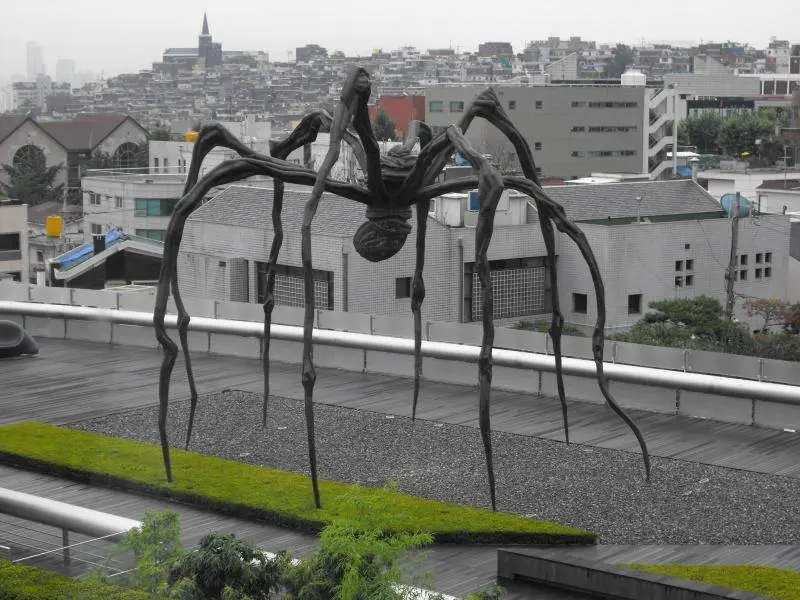
Giant spiders? Suuurre, why not? The above exhibit is part of a piece called “Maman” by Louise Bourgeois, dated 1999 and made of bronze. According to the booklet, “the sculpture portrays the painful memories of being raised by an authoritative father and loving, but introvorted and complex mother.”
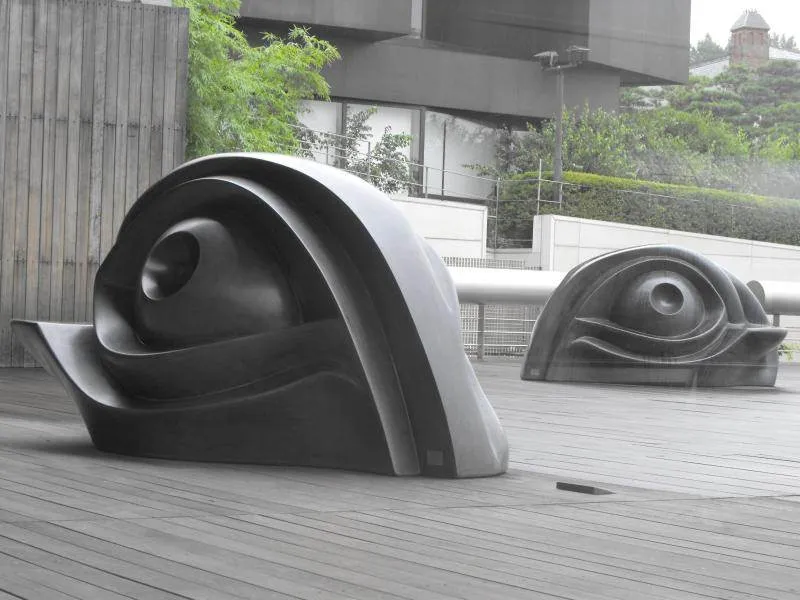
Eye Benches, carved out of Zimbabwean granite by an Italian mason according to the artist’s instruction, also Louise Bourgeois. Try sitting on one to experience the surrealist influence or “being followed by disembodied eyes”.
After paying for my ticket, I realized that photography was not allowed in the museum. This is a general rule at most museums – fine – but some museums are kind enough to permit photography without using flash or a tripod. This one is not – and there is enough staff roaming the museums to ensure that rule is followed.

The stairwell that cycles down the floors in Museum 1, housing Korea’s ancient art. It’s not technically art, but it was the only place where I could sneak of something beautiful without being asked ever-so-politely to put my camera away (in Korean, of course).
For the first time in as many times as I’ve gone to a Korean museum, I am forced to present you with pictures from the booklet – any faults regarding color and quality are my own.

A celadon gourd-shaped ewer (teapot) from the Goryeo Dynasty (13th century) – one of several National Treasures on display on the fourth floor.

A blue and white porcelain jar from the early 15th century, or the Joseon Dynasty. You’ll see quite a few wonderful pieces such as these when you start your tour of Museum 1 on the fourth floor (yes, you start on the fourth floor and work your way down).

The Diamond Mountains by Jeong Seon, from 1734. Quite a few other old paintings here from the Joseon Dynasty here, and all original.
The highlight of this historical museum is a wonderful collection of Buddhist art and metal works, some dating to the Three Kingdoms period (the 6th century, to those of us in the Western world). While the best of the best are primarily well-preserved statues, there are also several incense burners, candlesticks, and some ancient writings as well.
From here, work your way to Museum 2, both seamlessly connected to the main lobby. Here, I was told to proceed to the 2nd floor from the basement to start the tour. The 2nd floor focused on Korean modern art, primarily from the 20th century but with a few very recent pieces (one dated 2004) to emphasize the ‘modern’ in modern art. With a little bit of everything – sequins swirling, welded steel, and the more typical sculptures and oil on canvas, it’s certainly a visual feast.
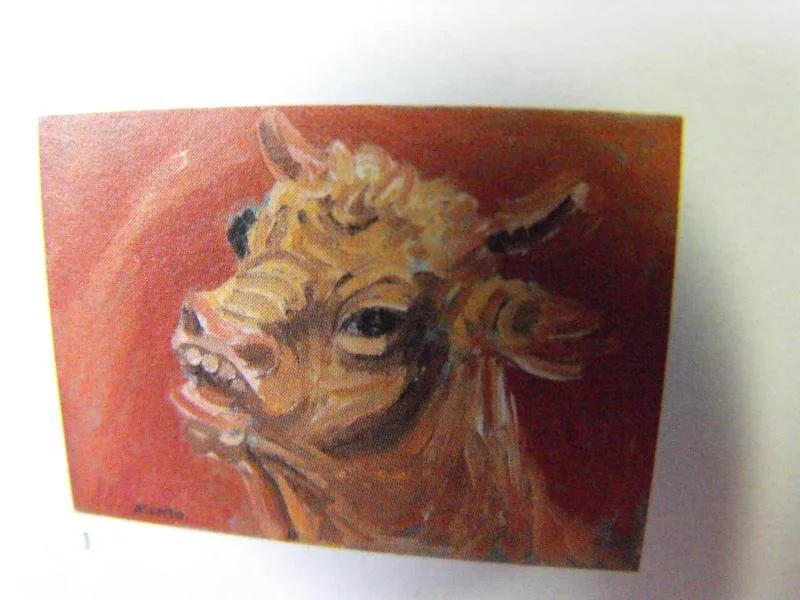
“A Bull” by Lee Joong-seop, 1953-1954 – found on the the second floor of Museum 2.
The first floor featured an eclectic collection of modern art by artists from around the world. The primarily post-war collection of American and European modern art was interesting and varied, but challenges your idea of what art truly is. The oddest on the floor – an untitled piece hanging from the ceiling made of white polyurethane (Lee Bul, 2002) that looks somewhat like a decomposed Sentinel of Matrix fame. The most interesting – what I’ll call the ultimate pill cabinet with thousands of unique-looking pills in rows against a mirrored backing. Stretching 2 meters tall and 5 meters long, it’s one of the larger pieces in a museum filled with larger pieces.
From here it was time to walk down to the lobby, browse the overly expensive souvenir store (50,000 won for a tie. Seriously?), then enjoy a few pieces in the lobby I missed the first time around:
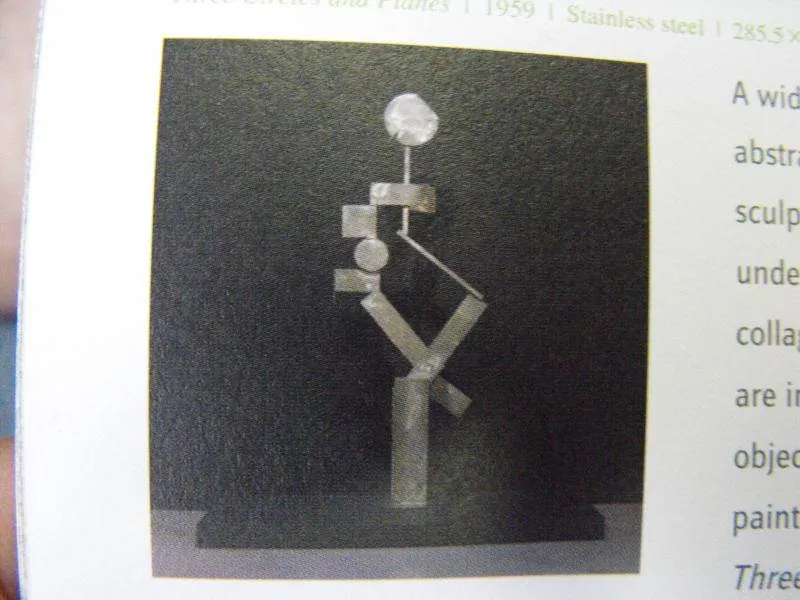
“Three Circles and Planes” by David Smith, 1959 – found in the lobby area. Made of stainless steel and polished irregularly to produce “an expressionist effect”.
As a whole, the museum is worth an visit if you’re a fan of either traditional or modern art – and yes, you’ll almost certainly spend more time in one or the other based on your interest. If you’re interested, a English tour is offered every Saturday and Sunday at 3pm. The 10,000 won ticket is bit high, considering many other museums in Seoul are either free or 1,000 won at the most for general admission. If you go, take your time and enjoy the sights – the time seemed to go by faster than expected. Directions to Leeum Museum: Take line 6 of the Seoul subway system to the Hangangjin station (one stop from Itaewon). Take exit 1 to street level, then take the first right past a large blue arch. Keep walking up the hill for about 150 meters, following the steel and glass buildings until you see the entrance to the museum on your right.

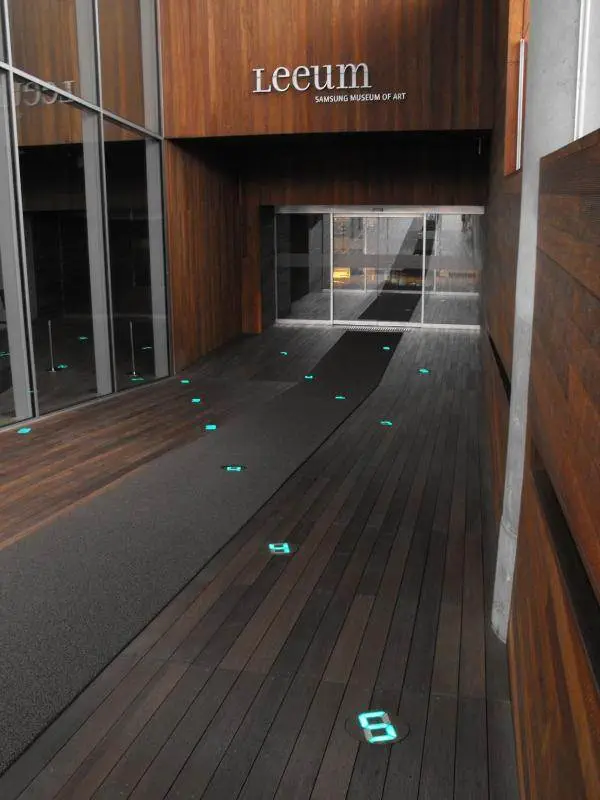


That same spider figure is the defining landmark of Roppongi Hills in downtown Tokyo, an area famously full of foreigners.
http://www.huongdu.com/pics//Japan%202005/Tokyo/Roppongi%20Hills%20Spider.jpg